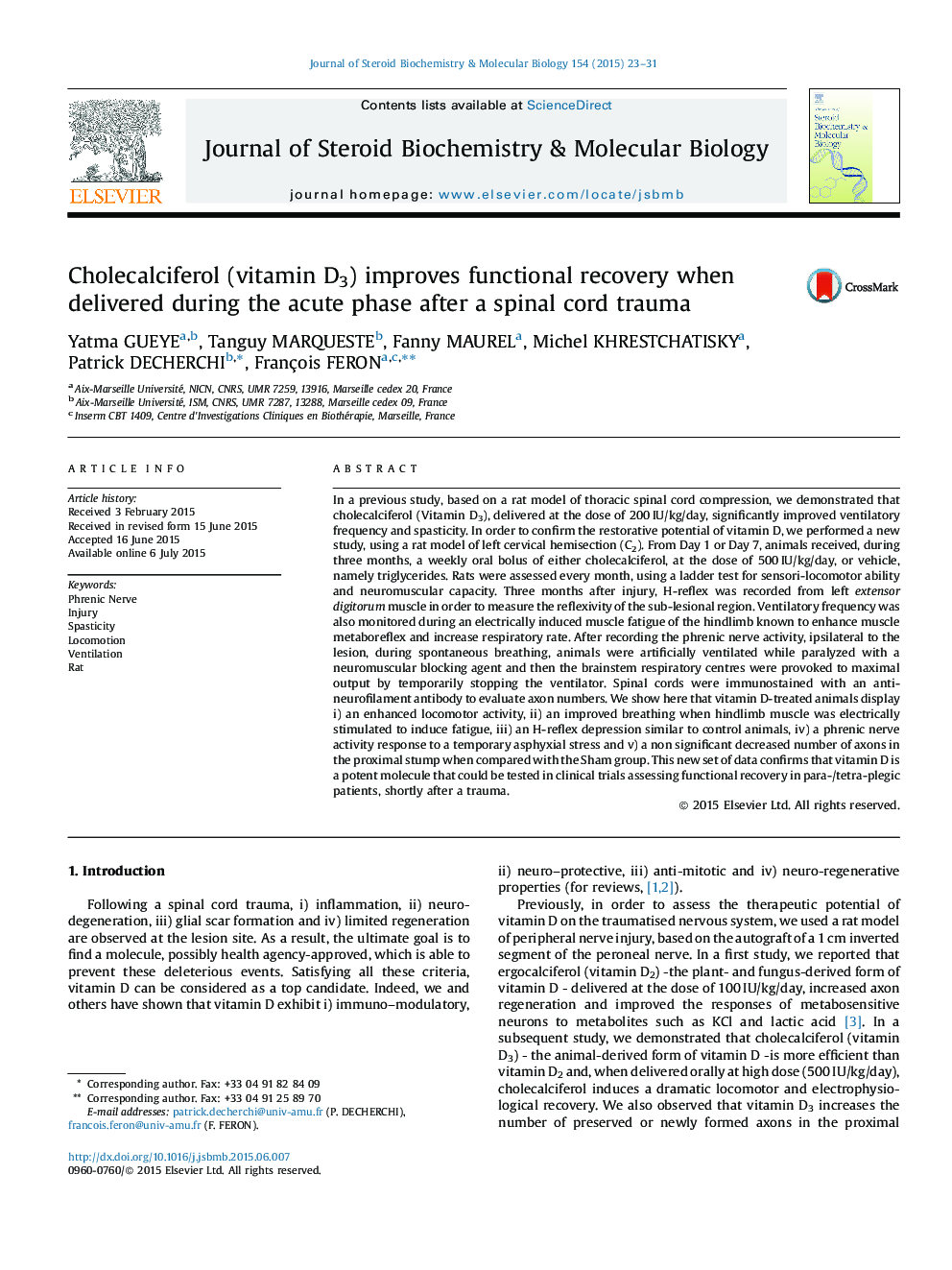| Article ID | Journal | Published Year | Pages | File Type |
|---|---|---|---|---|
| 1991295 | The Journal of Steroid Biochemistry and Molecular Biology | 2015 | 9 Pages |
•Vitamin D is an advisable molecule for limiting injury and improving the repair of the traumatised spinal cord.•Vitamin D-treated lesioned animals display an enhanced locomotion and breathing.•Vitamin D improves spasticity.•Vitamin D should be administered as soon as possible after the trauma.•A clinical trial can be envisioned.
In a previous study, based on a rat model of thoracic spinal cord compression, we demonstrated that cholecalciferol (Vitamin D3), delivered at the dose of 200 IU/kg/day, significantly improved ventilatory frequency and spasticity. In order to confirm the restorative potential of vitamin D, we performed a new study, using a rat model of left cervical hemisection (C2). From Day 1 or Day 7, animals received, during three months, a weekly oral bolus of either cholecalciferol, at the dose of 500 IU/kg/day, or vehicle, namely triglycerides. Rats were assessed every month, using a ladder test for sensori-locomotor ability and neuromuscular capacity. Three months after injury, H-reflex was recorded from left extensor digitorum muscle in order to measure the reflexivity of the sub-lesional region. Ventilatory frequency was also monitored during an electrically induced muscle fatigue of the hindlimb known to enhance muscle metaboreflex and increase respiratory rate. After recording the phrenic nerve activity, ipsilateral to the lesion, during spontaneous breathing, animals were artificially ventilated while paralyzed with a neuromuscular blocking agent and then the brainstem respiratory centres were provoked to maximal output by temporarily stopping the ventilator. Spinal cords were immunostained with an anti-neurofilament antibody to evaluate axon numbers. We show here that vitamin D-treated animals display i) an enhanced locomotor activity, ii) an improved breathing when hindlimb muscle was electrically stimulated to induce fatigue, iii) an H-reflex depression similar to control animals, iv) a phrenic nerve activity response to a temporary asphyxial stress and v) a non significant decreased number of axons in the proximal stump when compared with the Sham group. This new set of data confirms that vitamin D is a potent molecule that could be tested in clinical trials assessing functional recovery in para-/tetra-plegic patients, shortly after a trauma.
